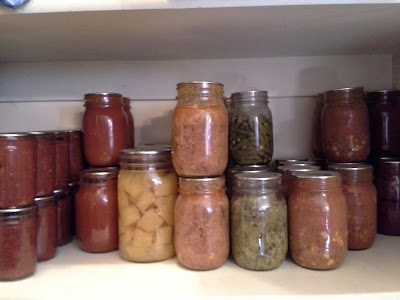For example, my local grocery stores have the following "cannable" items on sale this week:

Beef Roast (Rump)
I realize that this first one is a little bit of a strange one, but canned meat is fantastic! One of my nursing home residents told me that her husband used to go hunting every year, and a portion of what he shot got canned. Later on, after his health had declined a bit and he was no longer able to go hunting, she would scan the ads to find meat that was on sale, and can it. Grandma always canned a portion of the game that grandpa shot, too. I thought it was a great way to preserve your meat, and it is super easy to use. Some of the best loose meat sandwiches I've ever had came from home-canned meat! Here are some instructions on canning meat.
Roma Tomatoes
Since Roma tomatoes are a paste tomato, it stands to reason that they would be made into tomato paste. Click here for an easy tomato paste recipe that includes canning instructions.
Grapes
Grapes are nice because you can juice them and can the juice, or you can make grape jelly. You could even mash them up to make wine, but then you would need to bottle it, not can it. Besides, that's another blog post in itself.
Peaches or Nectarines
In my family someone always had a peach tree, so there were always peaches to be canned in the fall or winter. While the obvious choice would be to preserve peach slices in a light syrup, you could also make them into jam, jelly, or pie filling, and can that. Nectarines can also be used in place of Peaches, since the only difference between the two is that nectarines lack the fuzz that peaches have.
Plums
I had never considered it before, but you can make plums into jelly or jam. Although I've never tried it, I think it would be an option worth exploring!Asparagus
Asparagus is an fairly easy vegetable to can. If you have tall, thin jars you can preserve the spears whole, if not, you can just as easily snap them and preserve them in another type of jar. All you need to can asparagus is a little salt and some water, but if you're feeling daring you could always pickle it! Either way, the instructions are here.
Pineapple
Although I had never considered it before, I came up with the idea that one might be able to can pineapple at home several months back, and I spent an entire workday obsessing about the idea. When I got home I finally had the opportunity to research the subject, and was quite satisfied at how easy it is to can pineapple.

Carrots
You can either can your carrots on their own, or you can use them to compliment other items, such as pickled jalapenos. Likewise, you can pickle carrots and can them.








